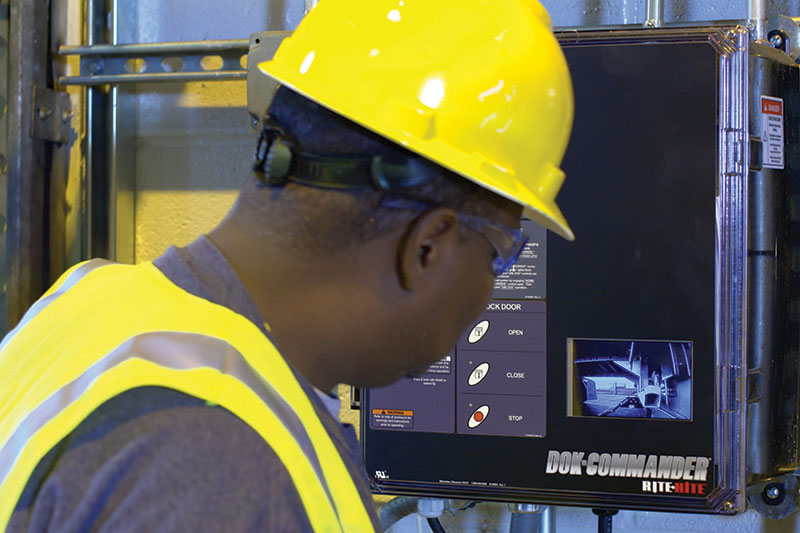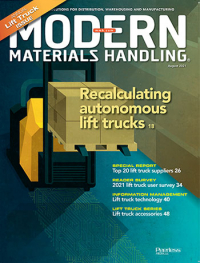Arctic Cold Storage drills down for dock efficiency
How a Minnesota cold storage 3PL is reaping benefits of a paperless logistics management system.
Like oil prospectors drenched in bubbling crude, materials handling professionals have found mixed blessings as they tap into rich veins of data. The process of refining a gusher into actionable intelligence can seem overwhelming, especially when some companies have already achieved baron status following end-to-end digital transformations. For the rest, success stories are often characterized by limited scope and iterative improvement.
Dock operations may not be the first drilling site that comes to mind, but one Midwest third-party logistics (3PL) warehouse has discovered barrels of value after modernizing the management of dock equipment, processes and workers. Brian Kunkel, operations manager for Arctic Cold Storage, recalls approaching longtime partner Rite-Hite with a specific pain point.
“When it started three years ago, we were thinking about a program to look at energy use and some basic dock management,” Kunkel says. “It was nothing like what it has evolved into today.”
When the well is dry
Founded in 1945 as a local distribution business, Arctic Cold Storage (ACS) of St. Cloud, Minn., has grown into one the Midwest’s leading food distribution 3PLs in the past two decades. In 2018, an 80,000-square-foot addition brought the facility’s total footprint to 250,000 square feet. The warehouse now has four separate shipping/receiving docks with 38 dock doors. It handles between 130 and 160 truckloads per day, picking and prepping shipments of 11 to 12 million pounds of refrigerated and frozen food per week for large national franchisees and several Fortune 500 companies.

The 2018 addition, intended to serve a major client, nearly doubled the company’s annual throughput from 500 million to 900 million pounds. The company had been using several spreadsheets, two-way radios and yard checks on foot to track appointments, trailer moves and dock usage. Only one person could access the appointment spreadsheet at a time.
The system wasn’t conducive to scheduling appointments during the facility’s busiest times or handling appointment time changes. If more than one carrier called in at the same time (which was frequent) they were put on hold until the previous carrier’s appointment was set up.
“Our world was full of spreadsheets. Many, many spreadsheets,” Kunkel says. “You’d have to go back and forth from one to another, as none of them were tied together. We’d do a truck log and a different sheet to track where our trailers were in the doors. It was a lot of extra work.”
Communications were difficult and often inefficient, and associates did a lot of manual entering, cutting and pasting from different spreadsheets. In some cases, overlapping appointment times created confusion as to who had what time. Certain time slots were often overbooked, challenging the warehouse to step up their game.
Moving trailers was often inefficient. Carriers weren’t loaded or unloaded as quickly as they could have been, and detention charges were too common. Yard drivers came out front from the back lot, got a new list, then drove back around the building to pick up another trailer. To track a truck’s status, employees might have to scroll between security cameras or back and forth between different logs.
“The radio chatter was horrible,” Kunkel adds. “We would have people going back and forth talking about what trailers go in the door, what trucks to get unloaded. It was constant radio chatter all day long, which made it tough to communicate. We thought what we had in place worked, but clearly our manual processes weren’t working.”
Detention costs were one of the biggest concerns, and Kunkel suspects carriers were using it as another revenue source. ACS approached Rite-Hite to track and get control of these costs. The warehouse became a beta site for a new dock management solution Rite-Hite was developing. Kunkel remembers the ACS team getting a bit carried away at first.
“We had a lot of input,” Kunkel recalls. “There were some off-the-wall ideas, but they pulled us back and said ‘maybe in the future.’ Then, there were other ideas that were great additions to the program.”
On the same page
Based on input from ACS and market research, the current suite of dock management hardware and software comes together to create Rite-Hite’s Dok-Vu solution. The paperless software system virtually eliminates the need for spreadsheets and two-way radios. Connecting managers, materials handlers, yard personnel and carriers, the solution allows employees to see at-a-glance status of every dock and trailer. Carriers can avoid long lines by checking themselves in and out and getting text alerts on unload status.
Kunkel says managers using Dok-Vu can oversee appointments, monitor dwell times and help keep docks fully used, gaining better control of detention and demurrage charges, labor costs and shipping accuracy. Centralized data also allows managers to review current trends and historical data to make more data-driven decisions and help identify improvement opportunities they couldn’t see before.
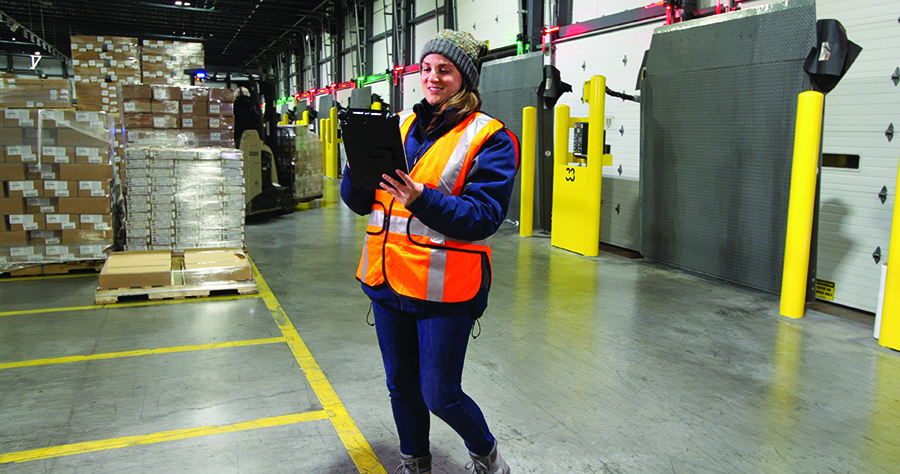
“Real-time lot visibility has been huge,” Kunkel says. “It doesn’t matter where in the facility you are, whether on a PC or tablet or phone, we all see the same thing.”
The solution has streamlined receiving, where carriers no longer have to wait for an empty space to drop a trailer. Cutting even 5 to 15 minutes for a trailer has improved loading times. Previously, the two yard drivers were struggling to keep up with temperature checks and spot checks.
“In the yard and in the trucks, weather was a factor,” Kunkel says. “A couple weeks ago it was -10ºF, and drivers used to have to go out in the cold, write things down, then deliver paperwork. Now we use an iPad in the truck, push a couple buttons, and it’s done.”
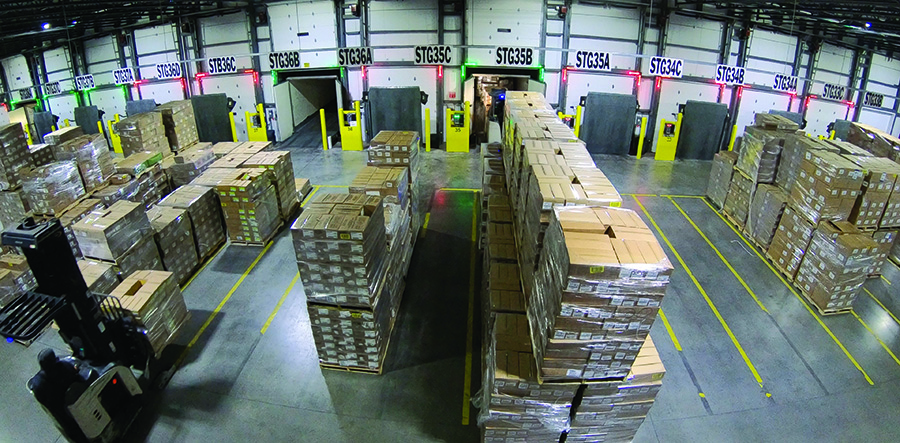
Two new iPad Pros and two Android tablets access Rite-Hite’s Web-based server. The centralized dashboard collects data from a series of sensors and monitoring devices on the dock equipment. Granular, real-time data eliminates duplicated efforts and offers proof of efficiency.
“If there’s a two-hour window, and it takes 45 minutes to back into a door, we know in real time when the driver pulled in and when he pulled away and everything is time stamped,” Kunkel says. “We’ve seen a huge reduction in detention and turn times and can now go back to customers and carriers and say ‘here’s the documentation.’ Before, we had a number, but there was still some question about its accuracy.”
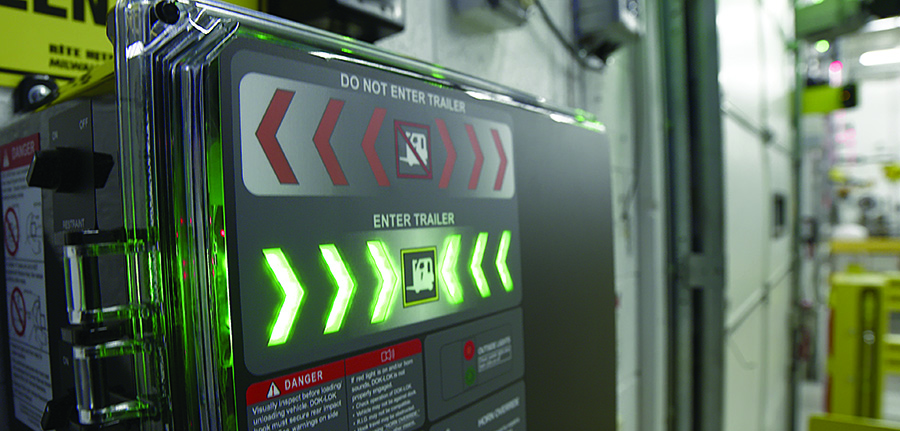
Real-time communication from the office to the yard truck has simplified tasks that were often a source of confusion. Prior to Dok-Vu, if the same carrier delivered three trailers, the office would rattle off the three numbers. Understandably, yard workers frequently had to call the office to remind them which was which. Without a radio earpiece chattering away, drivers have fewer distractions, a safety improvement Kunkel appreciates.
“It smooths the process of arriving, loading and avoiding mis-loads, which happened in the past when trailers get mixed up if they’re one digit off,” he says. “From a cost savings standpoint, we’ve seen a huge reduction in duplicating efforts. We were doing a lot of stuff two or three times. Now our yard driver no longer has to come in and out of the office. He’s spending more time in the truck moving trailers.”
The system enables ACS to define rules that can, for example, prioritize a refrigerated trailer that has been idle long enough that its temperature will soon rise above acceptable thresholds. The system can detect false openings, which is a matter of self-preservation for sensors that prefer minimal exposure to temperature extremes. The facility has newer and older doors, and sensors can track performance to offer timely maintenance suggestions. The data will indicate, for example, if a door with 1.5 million cycles is worth refurbishing or should be replaced.
“I was surprised to learn how it ties everything together: trailer moves, dock usage and appointments,” Kunkel adds. “We have a pretty sophisticated warehouse management system that always promised all this stuff, but never really delivered. Rite-Hite came in here, and in less than two years we have an overview of everything.”
Kunkel also notes the new system has increased ease of training. New employees are able to easily learn the software, and experienced workers have enthusiastically embraced the new tools.
“Our staff comes to work a little bit happier every day,” Kunkel says. “They get to be on the cutting edge of technology and see how everything works together. Communication flows much easier.”
Especially with “hours-of-service” laws restricting the duration of a truck driver’s shift, keeping trucks moving is one of the biggest benefits for ACS, carriers and customers.
“Some parts of this industry are struggling with that,” Kunkel says. “A happy driver makes a happy facility because they don’t have to come in asking why they’re sitting parked in the yard.”
Kunkel says the program is still evolving, and his next goal is even greater communication and visibility. He imagines outdoor monitors akin to flight status displays at an airport. At a glance, drivers checking in will see their destination door, where another monitor will inform them of loading progress.
“A lot of drivers live 30 minutes to an hour away, so they call in to see if a trailer is ready,” Kunkel says. “In the world we live in today, everything is app-based, and there’s no reason they shouldn’t be able to get that information themselves instead of calling someone and waiting on hold. I think we’re going to see some big improvements on the technology side, and we’ll be ready for them.”

Article Topics
Loading Dock Equipment News & Resources
Rite-Hite ONE digital platform debuts ASSA ABLOY acquires Integrated Warehouse Solutions in the U.S. Destination: Loading dock safety Yusen Logistics partners with Pickle Robot to streamline container unloading Miner Limited, an OnPoint Group company, acquires Bob’s Overhead Door Miner Limited acquires Central State Door Service Loading Dock Safety with New Trailer Designs More Loading Dock EquipmentLatest in Materials Handling
Manhattan Associates selects TeamViewer as partner for warehouse vision picking ASME Foundation wins grant for technical workforce development The (Not So) Secret Weapons: How Key Cabinets and Asset Management Lockers Are Changing Supply Chain Operations MODEX C-Suite Interview with Harold Vanasse: The perfect blend of automation and sustainability Consultant and industry leader John M. Hill passes on at age 86 Registration open for Pack Expo International 2024 Walmart chooses Swisslog AS/RS and software for third milk processing facility More Materials HandlingAbout the Author
Subscribe to Materials Handling Magazine

Find out what the world's most innovative companies are doing to improve productivity in their plants and distribution centers.
Start your FREE subscription today.
April 2024 Modern Materials Handling

Latest Resources


